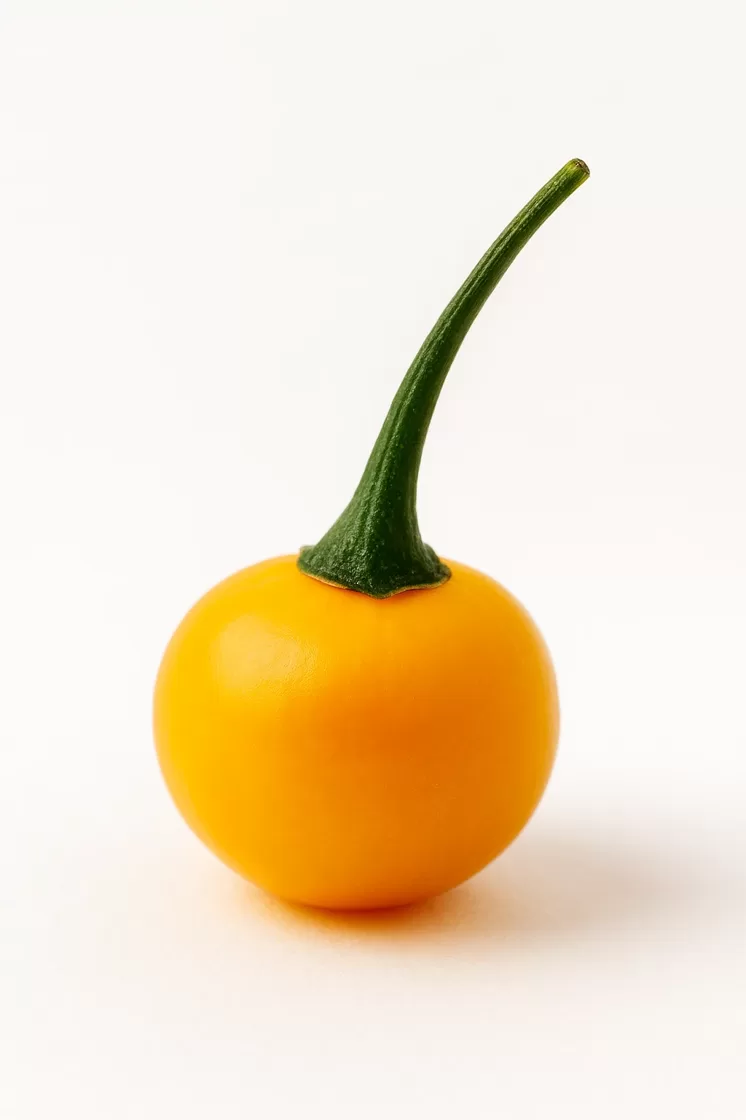Aji Charapita - The Exotic Peruvian Chili Pepper

Aji Charapita, a tiny chili pepper from Peru’s Amazon jungles, is renowned for its vibrant fruity and citrusy flavor, moderate heat of 30,000–50,000 Scoville Heat Units (SHU), and high market value. This pepper, often called the "mother of all chilis," is a cultural gem in Peruvian cuisine and one of the world’s most expensive peppers due to its labor-intensive harvesting.
What is Aji Charapita?
Aji Charapita, scientifically Capsicum chinense, is a small, round chili pepper, about 0.5–1 cm in diameter. Its glossy, thin skin turns from green to yellow or orange when ripe. The flesh is crisp and juicy, with small cream-colored seeds. According to Specialty Produce, it delivers a bright, fruity, citrusy flavor with moderate heat, making it a favorite among chefs.
Where Does Aji Charapita Come From?
Native to the northern jungles of Peru, particularly in Loreto and Ucayali, Aji Charapita grows wild along rivers like the Ucayali and Amazon. Peru, a key origin of chili peppers, has cultivated such varieties for over 4,000 years. This pepper is recognized in the Slow Food Foundation’s Ark of Taste for its cultural significance in Amazonian cuisine.
What Does Aji Charapita Taste Like?
The pepper boasts a sweet, fruity, and citrusy flavor with floral undertones, as noted by HolisticWow. Green pods are grassier, while ripe yellow or orange pods are tangier, making them ideal for fresh or dried use in culinary applications.
How Hot is Aji Charapita?
Aji Charapita ranges from 30,000 to 50,000 SHU, comparable to cayenne peppers, offering a moderate, lingering heat. According to PepperScale, this level makes it versatile for various dishes without overwhelming other flavors.
Heat Comparison
How is Aji Charapita Used in Cooking?
Aji Charapita is a versatile ingredient in Peruvian cuisine, especially in the Amazon. Here’s how it’s used:
- Salsas and Sauces: Blended into condiments or used in “aji de cocona” with cocona fruit, cilantro, and lime.
- Finishing Spice: Crushed or powdered to season rice, fish, or chicken.
- Pairings: Enhances tropical fruits, seafood, and grilled meats.
As noted by Atlas Obscura, it’s a key component in dishes like juanes and tacacho.
How to Grow Aji Charapita?
Aji Charapita thrives in warm, humid climates and is ideal for container gardening. Here’s how to grow it:
- Start Seeds: Sow indoors 8–12 weeks before the last frost in soil at 80–85°F.
- Transplant: Move seedlings outdoors when temperatures exceed 65°F, spacing 14–18 inches apart.
- Care: Provide full sun, regular watering, and fertilize every 4–6 weeks.
According to Baker Creek Seeds, its compact plants can yield hundreds of peppers per season.
Why is Aji Charapita Expensive?
Its high price stems from:
- Labor-Intensive Harvesting: Tiny size requires meticulous hand-picking.
- Limited Cultivation: Grown mainly in Peru’s jungles.
- High Demand: Sought by gourmet chefs for its unique flavor.
While some claim prices reach $25,000 per kilo, reliable estimates from Spicy Exchange suggest $120–$520 per kilo for dried peppers.
Comparison with Other Peppers
Here’s how Aji Charapita compares to other chili peppers:
| Characteristic | Aji Charapita | Cayenne | Habanero |
|---|---|---|---|
| Size | 0.5–1 cm diameter | 10–15 cm length | 2–6 cm |
| Heat (SHU) | 30,000–50,000 | 30,000–50,000 | 100,000–350,000 |
| Flavor | Fruity, citrusy | Sharp, smoky | Fruity, floral |
| Origin | Peru | Central/South America | Mexico |
References
- PepperScale
- Specialty Produce
- Pepper Geek
- Slow Food Foundation
- Atlas Obscura
- Spicy Exchange
- Baker Creek Seeds
- HolisticWow
